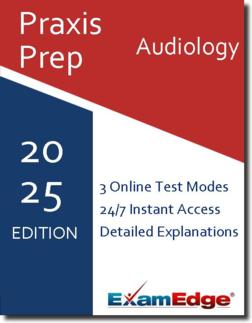Praxis Audiology (5342) Practice Tests & Test Prep by Exam Edge - Topics
Based on 28 Reviews
- Real Exam Simulation: Timed questions and matching content build comfort for your Praxis Audiology test day.
- Instant, 24/7 Access: Web-based Praxis Audiology practice exams with no software needed.
- Clear Explanations: Step-by-step answers and explanations for your Praxis exam to strengthen understanding.
- Boosted Confidence: Reduces anxiety and improves test-taking skills to ace your Praxis Audiology (5342).

Understanding the exact breakdown of the Praxis Audiology test will help you know what to expect and how to most effectively prepare. The Praxis Audiology has 120 multiple-choice questions The exam will be broken down into the sections below:
| Praxis Audiology Exam Blueprint | ||
|---|---|---|
| Domain Name | % | Number of Questions |
| Foundations | 10% | 12 |
| Prevention and Identification | 10% | 12 |
| Assessment | 40% | 48 |
| Intervention | 30% | 36 |
| Professional Issues | 10% | 12 |


